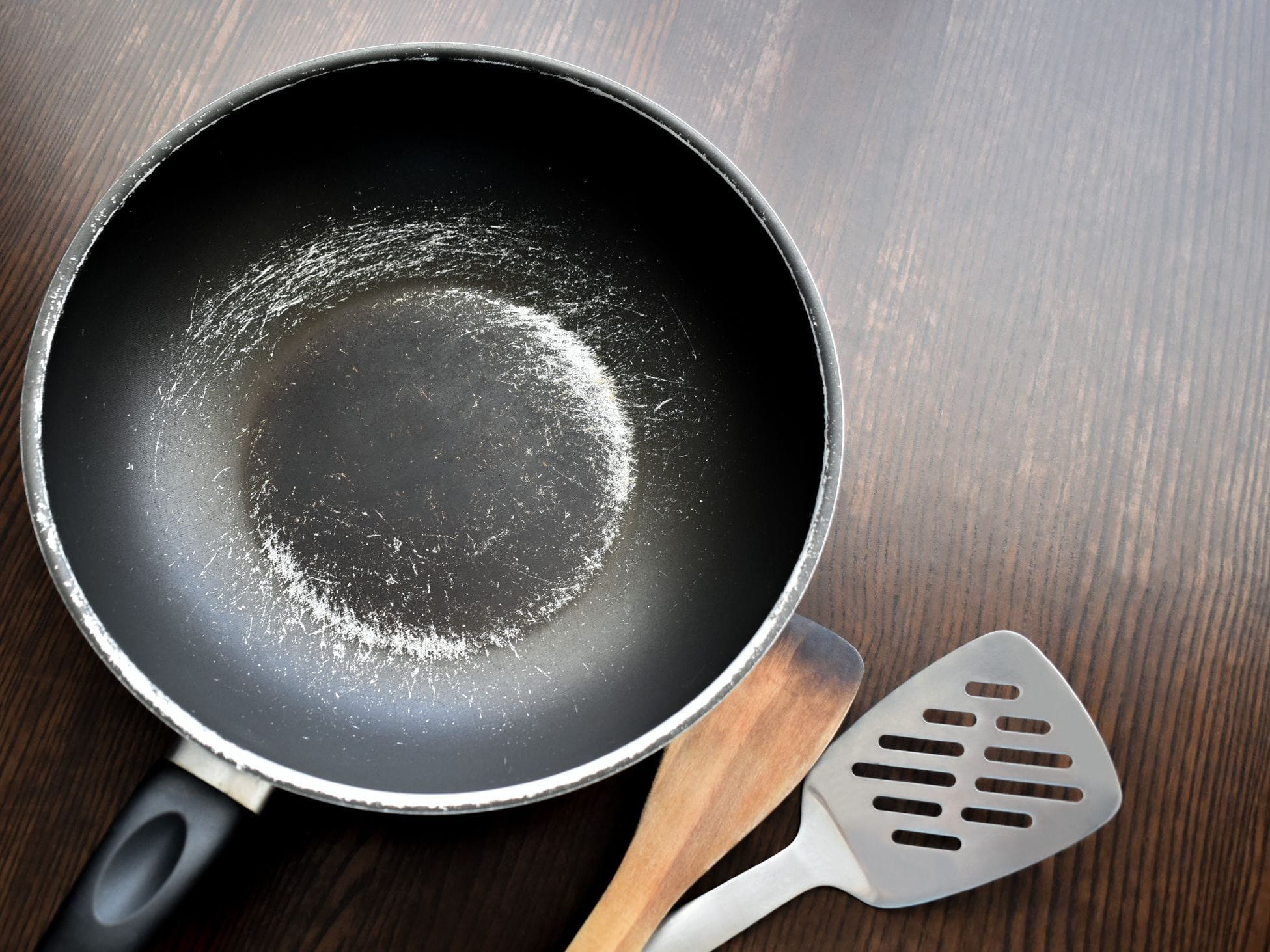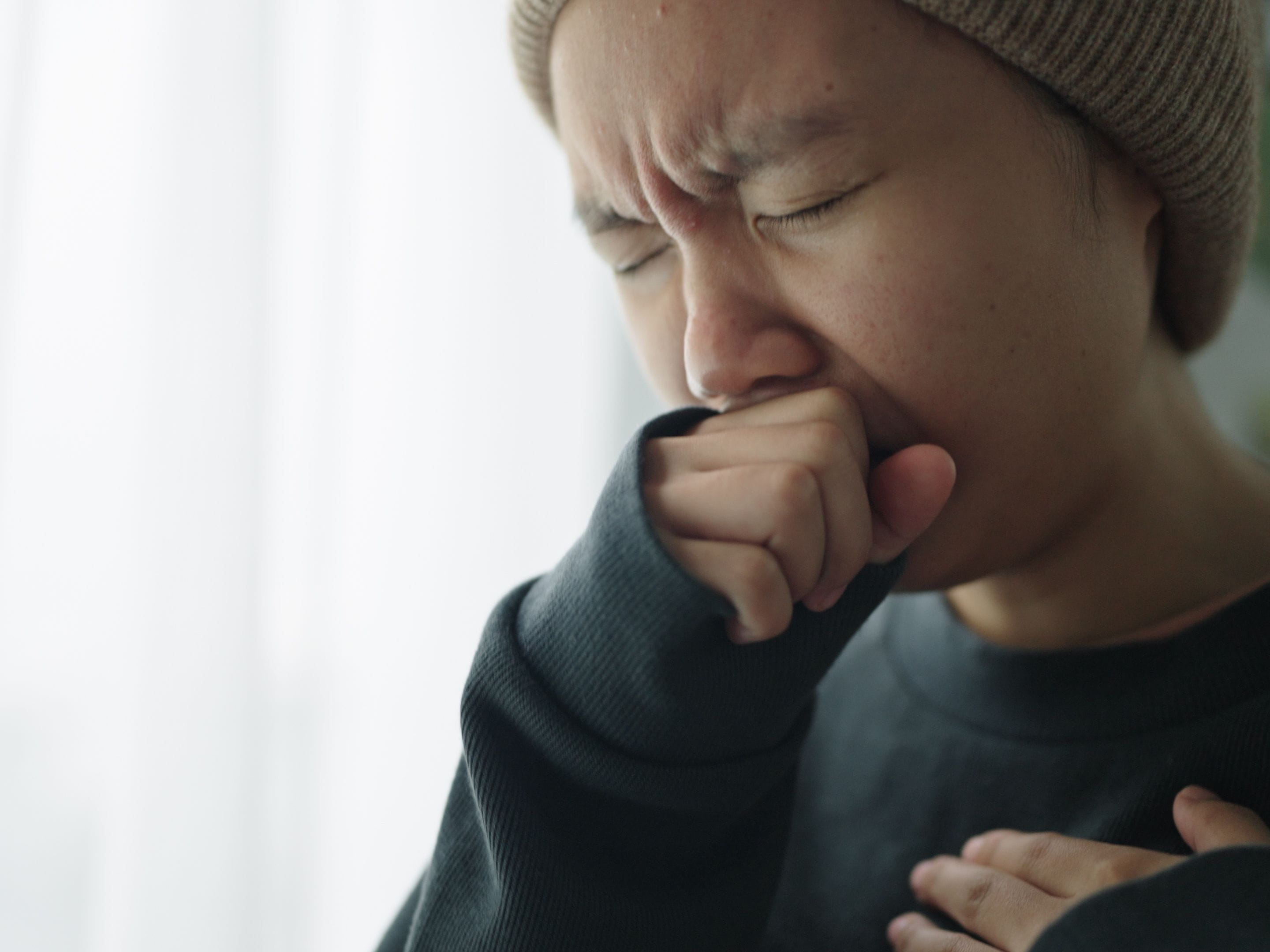Protect Yourself from Teflon Flu

The Bottom Line
Teflon flu is a condition caused by inhaling fumes from burning polymer products, usually nonstick cookware. While the symptoms are generally mild and self-limiting, they can be more serious in people with underlying lung problems and can be fatal to pet birds. Teflon flu can be easily prevented by using a few simple, safe cooking techniques.

What is “Teflon flu”?
Polymer fume fever, also known as Teflon flu, is a condition caused by inhaling fumes from burning plastic and polymer products. The most common polymer involved is polytetrafluoroethylene (PTFE), also known by the trade name Teflon. Teflon is a synthetic polymer that has been used for decades to coat cookware, giving it a smooth, non-stick surface. In addition, PTFE has been used in clothing such as raincoats, as wire coating, and in personal care products. Cookware is the most common source of Teflon flu because the fumes are created via heat.Are my nonstick pans a risk for Teflon flu?
While PTFE is generally a safe compound, when heated to high temperatures, fumes can be released and subsequently inhaled. Teflon coating on cookware starts to break down when exposed to temperatures above about 500 °F. Also, scratches on the surface of nonstick cookware can lead to fumes being released.
How you cook matters, too. For example, preheating a dry pan can allow it to reach an extremely high temperature. Cooking on high heat and broiling are also not recommended for nonstick cookware. Old pans with scratches and chips in the coating also present a risk.
How common is Teflon flu?
In 2023, there were only a few hundred cases of Teflon flu reported to US poison centers. However, the number of calls has increased over time. It is hard to determine the true incidence of Teflon flu, as it is likely underreported. This is because symptoms usually appear several hours after exposure to the fumes, so people might not make the association between the symptoms and exposure to Teflon. The symptoms also mimic those of a common cold and often resolve on their own, so people might not seek care.How to avoid Teflon flu at home
In general, nonstick cookware is safe if you follow basic precautions. First, inspect your cookware regularly for scratches, peeling, or chipping of the coating. Damaged cookware can produce more fumes and should be replaced. You can keep your cookware in good working condition by using wooden, plastic, or silicone cooking utensils instead of metal. Similarly, clean your cookware using detergent, water, and a soft sponge or cloth. Avoid using abrasive steel wool or scouring pads, as they will also damage the surface. Cook in a well-ventilated area, open windows, and use exhaust fans as needed.
When cooking with coated cookware, avoid high temperatures. Coated cookware is intended for low to medium heat. In addition, do not preheat an empty pan. Cooking on high heat and broiling should be done in other cookware, such as cast iron. If you want to avoid the risk of Teflon flu all together, you can use alternative types of cookware, including stoneware, anodized aluminum, cast iron, stainless steel, and ceramic cookware.
Signs and symptoms of Teflon flu
Symptoms of Teflon flu or polymer fume fever include chills, fever, fatigue, headache, body aches, and occasional chest tightness and airway irritation. People with underlying lung diseases such as asthma are more likely to develop respiratory symptoms. Symptoms generally occur within a few hours after being exposed to the fumes and usually resolve within 1 to 2 days.
Rarely, severe symptoms including lung damage have occurred due to inhaling polymer fumes. Such cases most often occur when pans have been heated to very high temperatures or when the person is exposed to fumes in an enclosed space for a long period of time. Symptoms of Teflon flu can mimic more serious exposures, such as to carbon monoxide, in addition to common viral illnesses.
What should I do if I believe I’ve inhaled plastic fumes?
If you are still cooking, turn off the heat to avoid additional fume production. Open the windows and turn on the exhaust fan. Get yourself and everyone out of the area, including pets. Monitor for symptoms. If you develop symptoms, you can take over-the-counter analgesics for headaches and body aches. Drink plenty of fluids and get rest. Patients with asthma who develop respiratory symptoms might benefit from a breathing treatment.
Other important information
If you have a pet bird, it is important to know that birds are extremely sensitive to polymer fumes and the first symptom of polymer fume exposure in birds can be sudden death. Keep birds out of the kitchen and keep your home well ventilated.
If someone is exposed to polymer fumes, or if you have a question about using nonstick cookware safely, help from experts is available through the webPOISONCONTROL online tool and by phone at 1-800-222-1222. Poison Control’s expert guidance is always free, confidential, and available 24 hours a day.
Maryann Amirshahi, PharmD, MD, MPH, PhD
Medical Toxicologist
Poison Control Media Information
Did you find this page helpful? If so, we need your support. Poison Control is in constant competition with misinformation online. Links to www.poison.org or our webPOISONCONTROL triage tool from other websites and blogs help internet searchers quickly find accurate information and Poison Control’s contact information in an emergency. If you use the content from this page, please provide attribution via a link back to this page, www.poison.org, or https://triage.webpoisoncontrol.org/#!/exclusions. By doing so, you could save a life. Thank you!
Poisoned?
Call 1-800-222-1222 or
Prevention Tips
- Follow directions on how to properly use and clean nonstick cookware.
- Inspect your cookware regularly for chips and scratches and replace any damaged cookware.
- Keep your kitchen well ventilated.
- Do not preheat nonstick cookware.
This Really Happened
Case 1. A woman in her 50s was cooking using a Teflon oven liner. Later that evening, she noticed that one of her birds had died suddenly. She also had a mild headache and some fatigue, feeling as though she had the flu. She called Poison Control, and they recommended medical evaluation for possible carbon monoxide poisoning; her blood tests were normal. She had her home tested, and there was no evidence of carbon monoxide. Another bird died after she used the Teflon liner again. It was then determined that both her symptoms and the death of her birds were related to Teflon fumes.
Case 2. A woman in her 30s was cleaning her oven when she noticed an unusual odor and realized there was a Teflon pan in the oven. The woman called Poison Control for advice. They recommended opening the windows and removing everyone from the area until the oven had cooled down enough to safely remove the pan. No one in the family developed any symptoms.
Case 3. A man in his 20s preheated an old, scratched Teflon-coated pan for cooking dinner and noticed smoke and noxious fumes. He turned off the heat and opened the window. The fumes dissipated, but he woke up with a headache and fatigue the next morning. His symptoms resolved by the following day, and he replaced the old cooking pan.
For More Information
Amenabar T. What is ‘teflon flu’? it’s linked to a coating on some nonstick pans. The Washington Post. July 16, 2024. Accessed August 19, 2024.
References
Lewis CE, Kerby GR. An epidemic of polymer fume-fever. JAMA. 1965;191:375-378.
Shimizu T, Hamada O, Sasaki A, Ikeda M. Polymer fume fever. BMJ Case Rep. 2012;2012:bcr2012007790.
Sprout WL. Polymer-fume fever. J Occup Med. 1988;30(4):296-300.
Poisoned?
Call 1-800-222-1222 or
Prevention Tips
- Follow directions on how to properly use and clean nonstick cookware.
- Inspect your cookware regularly for chips and scratches and replace any damaged cookware.
- Keep your kitchen well ventilated.
- Do not preheat nonstick cookware.
This Really Happened
Case 1. A woman in her 50s was cooking using a Teflon oven liner. Later that evening, she noticed that one of her birds had died suddenly. She also had a mild headache and some fatigue, feeling as though she had the flu. She called Poison Control, and they recommended medical evaluation for possible carbon monoxide poisoning; her blood tests were normal. She had her home tested, and there was no evidence of carbon monoxide. Another bird died after she used the Teflon liner again. It was then determined that both her symptoms and the death of her birds were related to Teflon fumes.
Case 2. A woman in her 30s was cleaning her oven when she noticed an unusual odor and realized there was a Teflon pan in the oven. The woman called Poison Control for advice. They recommended opening the windows and removing everyone from the area until the oven had cooled down enough to safely remove the pan. No one in the family developed any symptoms.
Case 3. A man in his 20s preheated an old, scratched Teflon-coated pan for cooking dinner and noticed smoke and noxious fumes. He turned off the heat and opened the window. The fumes dissipated, but he woke up with a headache and fatigue the next morning. His symptoms resolved by the following day, and he replaced the old cooking pan.
